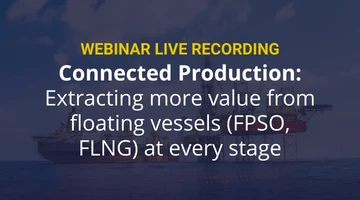A drive for new fuels
Total's journey towards futureproof
Add bookmarkTotal’s marine fuel accelerant
According to Xavier Pfeuty, LNG Manager of Total’s Marine Fuel Global Solutions group, the oil giant is committed to promoting LNG as a viable marine fuel. Speaking at the recent LNG Bunkering Summit, Mr Pfeuty related the “real improvement” in Total’s LNG presence as they passed the six million tonnes mark. Selling in three main markets (Africa, Asia, and Europe), Total’s LNG division has bunkering hubs in France, Hamburg, Singapore, South Korea, Oman. They are also investigating opportunities in the Gulf of Mexico and the Panama Canal.
As the IMO’s regulatory framework moves on apace, firms like Total are switching some focus onto LNG as a bridge fuel to take them into the 2020s and 2030s. LNG, when compared to marine fuel oil, can provide a 20 per cent reduction to CO2 emissions, an 85 per cent reduction to NOx, 90 to SOx, and an almost complete elimination of particulates. These reductions put LNG firmly on Total’s low-carbon roadmap – but there are some issues.
“The main and most challenging point for LNG worldwide remains the low-carbon roadmap, and the reduction of greenhouse gases by 50 per cent by 2050.”
Xavier Pfeuty, LNG Manager, Total Marine Fuel Global Solutions
LNG is seen as the best solution to addressing the stringent IMP regulations in the mid-term, making the option especially appealing for a newbuild.
However, to reduce global emissions by 50 per cent from their 2008 levels and lowering CO2 emissions per transport work by at least 70 percent by 2050 will require the development of alternative fuels, as LNG will not be able to meet those deadlines. However, with 10 per cent of the global fleet now older than 20 years, and more than a quarter older than 11 years, both retrofits and newbuilds will abound.
LNG markets and achievements
LNG delivered ex-ship is cheaper in Europe than in the US and Asia, and the LNG molecule price itself is cheaper than the products on the gasoil and heavy fuel markets. As such, Total has been pursuing major LNG contracts – and in December 2017, won their first supply contract with CMA CGM for 300,000 tonnes of LNG per year for ten years.
Then, in the following February, they signed an 18,600 m3 LNG bunker vessel. Current developments in Oman, focussing around a well in the port of Sohar, are set to produce “the first well-to-wheel project dedicated to LNG bunkering. Growing from a simple production field, Total’s Sohar project will tap into the Oman gas field using the existing pipeline network, leading to a one million tonnes per annum LNG plant, and then numerous bunkering vessels.
[inlinead]
Total has also been developing a major LNG project in Singapore, featuring three 180,000 m3 storage tanks as well as a larger 260,000 m3 tank. There are currently plans for two jetties, with the FID upcoming on the second.
At the end of 2018, with all these projects in the pipeline, Total was operating a 28 million tonnes per annum LNG portfolio (representing a 10 per cent market share) across their 10 import terminals, with the capacity for 24 million tonnes of liquefaction.
LNG outlook
Total’s LNG group will offer “worldwide multi-energy bunkering solutions to shipowners”, supported by the second largest LNG portfolio amongst the majors, overlapping major marine hubs. The next wave of vessels are due to come in before the IMO 2020 regulations, as is the completion of projects in both Panama and the Dominican Republic.
The Panama LNG terminal started up in June 2018 with a floating storage unit (FSU). Within the next few months, an additional 180,000 m3 LNG storage tank will be completed, and the facility will have the ability to reload small-scale vessels from 3,000 m3 up. Truck loading will be introduced in 2020.
Total’s LNG activities are rounded out by continual development of the Dominican Republic facility which began in 2003. It currently has a storage capacity of 160,000 m3, with two loading bays capable of handling vessels of 10,000 m3 or larger.
If you enjoyed this article, make sure to read Oil & Gas IQ's upcoming LNG World Report later this week.







